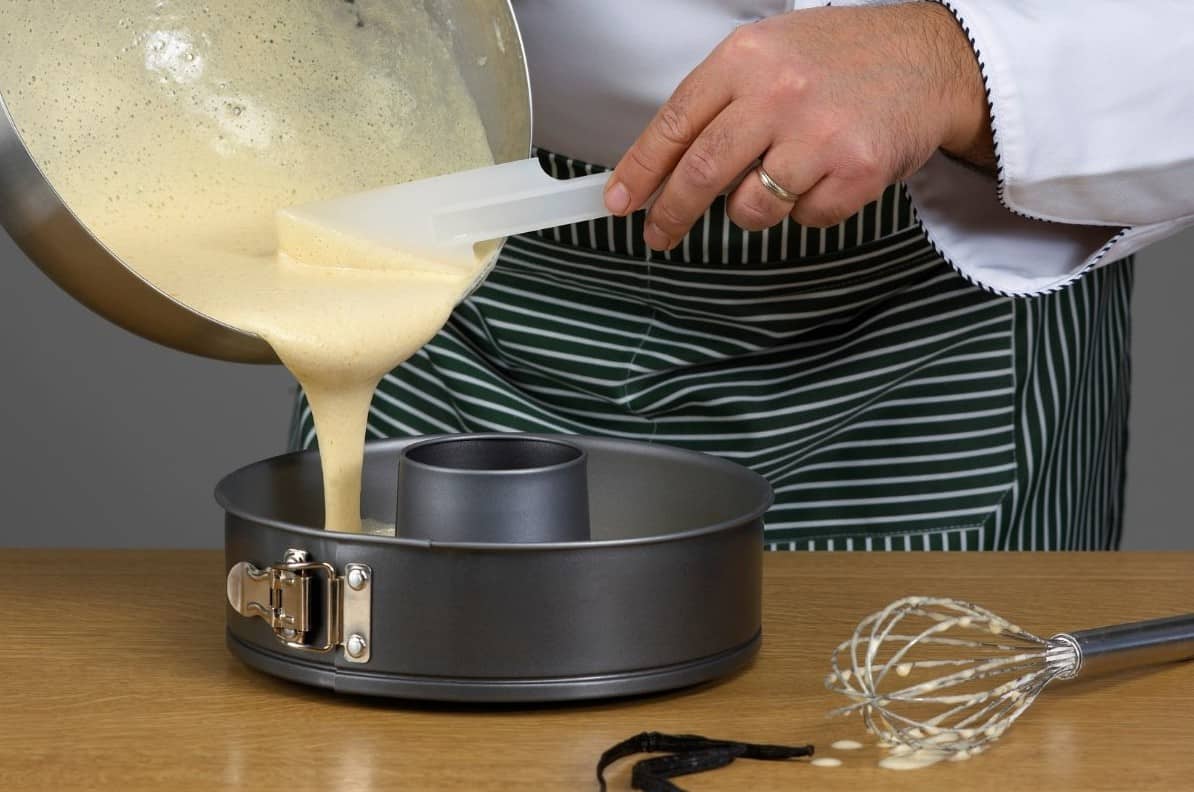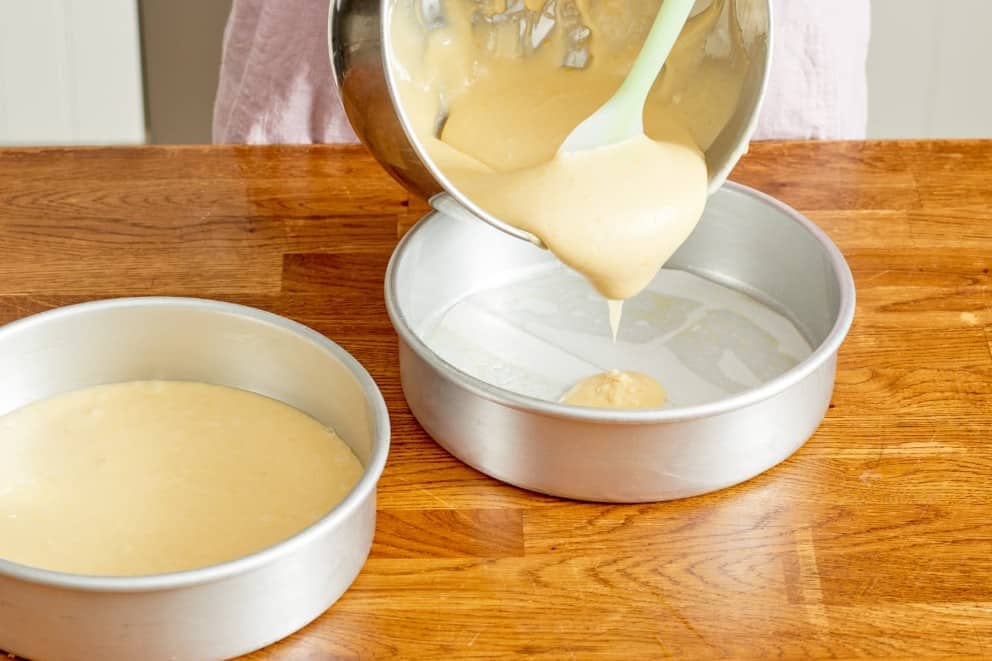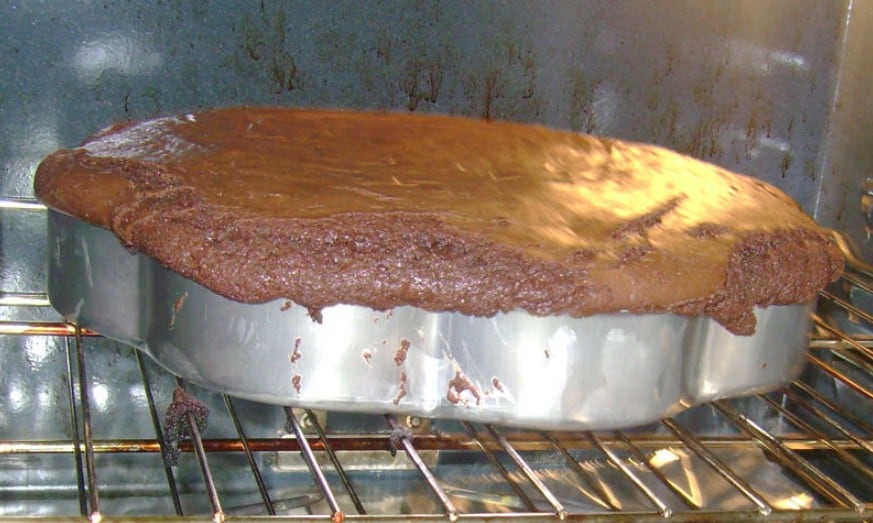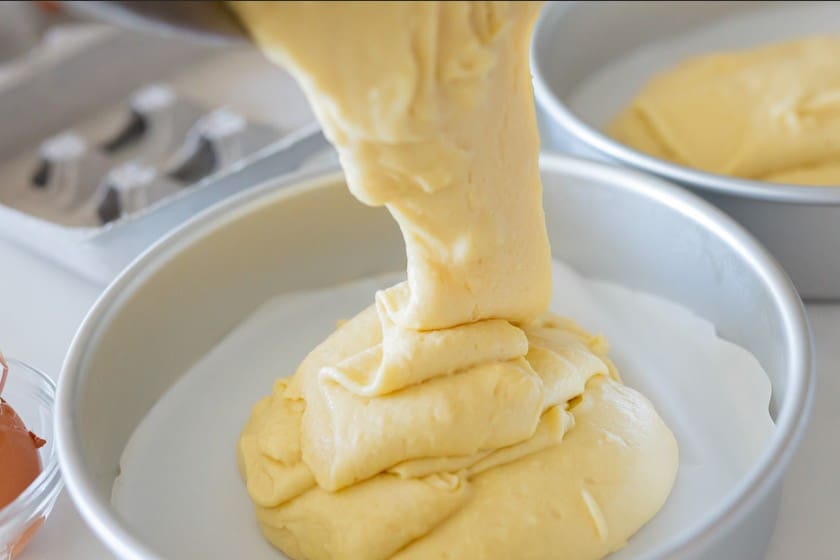You can say that baking is the point where art and science meet. Cakes and pastries are often so pretty. You will think it’s all about art and being creative. However, it turns out that a bit of scientific understanding is required before baked goods become not only beautiful but also edible.
Well, you don’t need to worry. We’ve got a fantastic answer to this question.
Check the Recipe

It is always a good idea to check the recipe for this concern. Recipes, often, are proven and tested, so the safest route to take would be to follow them.
The recipe might have all the details you need. However, you might not have everything at your disposal. Many home bakers may not have an extensive collection of baking pans.
I can’t just pull out a specific pan when a recipe calls for it. We will talk a little more about pan sizes later on, but the bottom line is you can’t just switch one pan size for another. The measurements stated in the recipe usually only work best for the specific tools suggested.
Sometimes, it could also be that you supposedly have the right pan. However, you still experience a mess up even how much you try to follow the recipe to the dot. The problem might not be because you’re doing something wrong. It could be the pan is not exactly the size it says it is!
Checking the recipe might be the best way to go, but you don’t have to worry if the recipe you’re eyeing can’t answer this question or if you don’t have the right tools at your disposal. We do have some general rules in baking that could help.
What is the General Rule When Filling Pans?

You only need to leave some room for rising. So, what is the magic number? Generally, you’d want to fill the pan around two-thirds to three-quarters full.
Different baked goods rise differently. Factors like the temperature and ingredients would also affect how much the baked good would ascent. However, these measurements seem to work best for any baked goods or pan.
Why Not Too Much?
Let’s talk about what could happen if you go below or beyond proper measurements.
At first, filling the pan to the brim or near the brim doesn’t seem that bad of an idea. The batter is thicker than water, and it won’t rock back and forth inside the oven, so it should be alright, right? No!
You might also think it’s okay for the cake or pastry to rise above the pan. Cupcakes and muffins rise above the cups, after all. Well, that might be true, but you have to remember that baked goods don’t only rise once baked. The batter rises before it’s ready, and you might already know what comes after. A mess, a big one, at that!
As with many other things, say, bowls and glasses, you don’t want to fill pans to the brim. The batter might be in the pan when you put it inside the oven, but if you do it that way, then it won’t stay in there.
Not only would your cake or pastry be ruined, but now you also have an oven to clean.
We hope you won’t have to face this problem, but if you ever mistakenly put too much and have to face the inevitable mess, make sure you wait for the oven to cool down! We know how frustrating kitchen mishaps are. We usually want to fix the mess as quickly as possible and often forget we’re dealing with heat most of the time in the kitchen. So again, don’t forget to let the oven cool down before cleaning it up!

What Do I Do With All the Batter That’s Left?
Now, one of the main reasons some fill their pans too much is because of the batter.
You might have followed a recipe and ended up with that much batter. It would be easy to assume that that’s how much batter you need then. However, that’s not always true!
There are several reasons why you may end up with too much batter. One reason we already stated above is that your pan may not exactly be the size it says it is.
Well, whatever the reason is, we don’t think many would say no to extra dessert! You can get a muffin pan or something similar and turn your extra batter into some extra dessert!
Why Not Too Little?
Okay, so we don’t want things to overflow and make a mess. You might decide to go on the safe side and go way below the pan. That would surely do the trick. Right? Again, not really.
You also don’t want to put too little batter on the pan. It might prevent overflowing, but it introduces a new problem. Putting too little could give you a flat cake. Also, even if it succeeds, who wants thin cake?
What’s the Right Amount Then?

Again, you want to keep the pan between two-thirds to three-quarters full, and you want to make sure you spread the batter evenly. You only want to be careful it stays between these measurements.
Tap, tap, tap! Tapping ensures that the batter is spread evenly and not concentrated more on one side than the other.
Things to Keep in Mind
Now that you know how much to put in your cake pan when making your favorite baked goods, let’s talk about some other things you might want to keep in mind.
Specific Cake Pans
If a recipe calls for a specific pan and you don’t have it, it might seem like switching it out would be alright. After all, you followed the recipe, right? You would most probably only have a differently sized or shaped cake, right?
As it turns out, you might need to make adjustments if you’re following a recipe and you don’t have the specific pan asked. Here’s where all the math comes in. However, you don’t need to worry! There are handy cake pan size and conversion charts available online that can be used for reference.
| Cake Pan Size | Volume | Alternative Pan Size Options |
|---|---|---|
| 6-inch round | 4 cups | 8×4-inch loaf pan, 8-inch square |
| 8-inch round | 6 cups | 9-inch round, 9-inch square, 11×7-inch |
| 9-inch round | 8 cups | Two 8-inch rounds, 8-inch square |
| 10-inch round | 11 cups | Two 9-inch rounds, 9×13-inch pan |
| 8-inch square | 8 cups | 9-inch round, 9-inch square, 11×7-inch |
| 9-inch square | 9 cups | 8-inch square, 10-inch round |
| 9×13-inch rectangular | 14 cups | Two 9-inch rounds, two 8-inch squares |
| 10×15-inch jelly roll | 10-12 cups | 9×13-inch pan, two 9-inch rounds |
| 12-cup Bundt pan | 12 cups | 10-inch tube pan, two 9-inch rounds |
| 10-inch tube pan | 16 cups | 12-cup Bundt pan, 9×13-inch pan |
| 11×7-inch rectangular | 6 cups | 9-inch round, 8-inch square |
Summary
Baking is both an art and a science. You would have to get through the sciencey part before you get to see a pretty cake, but hey, we think all the math is worth it! Also, you get to eat your masterpiece by the end of it all. After savoring a bite of the cake you made, it’s likely you’ll find the effort well worth it
If you have any other questions or concerns like this one, you might want to go check out our past discussions. Our platform offers various tips, tricks, and recipes that you might find helpful and interesting to try out.


Michael Johnson is the founder of Pan Mastery, Inspired by his blacksmith grandfather’s legacy has a deep appreciation for hand-crafted pots and pans, he provides invaluable guides, reviews, and recipes to enhance your culinary journey.
